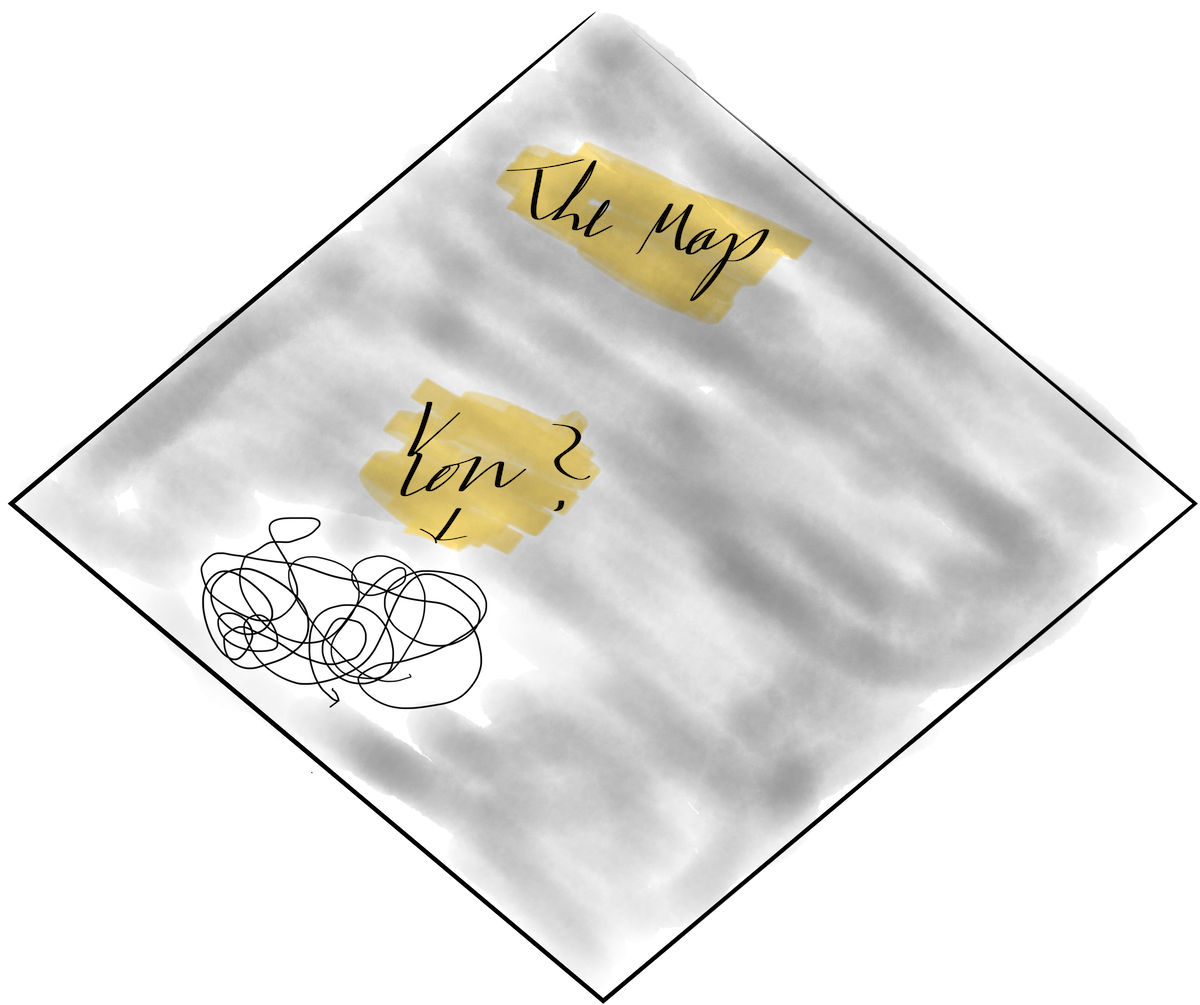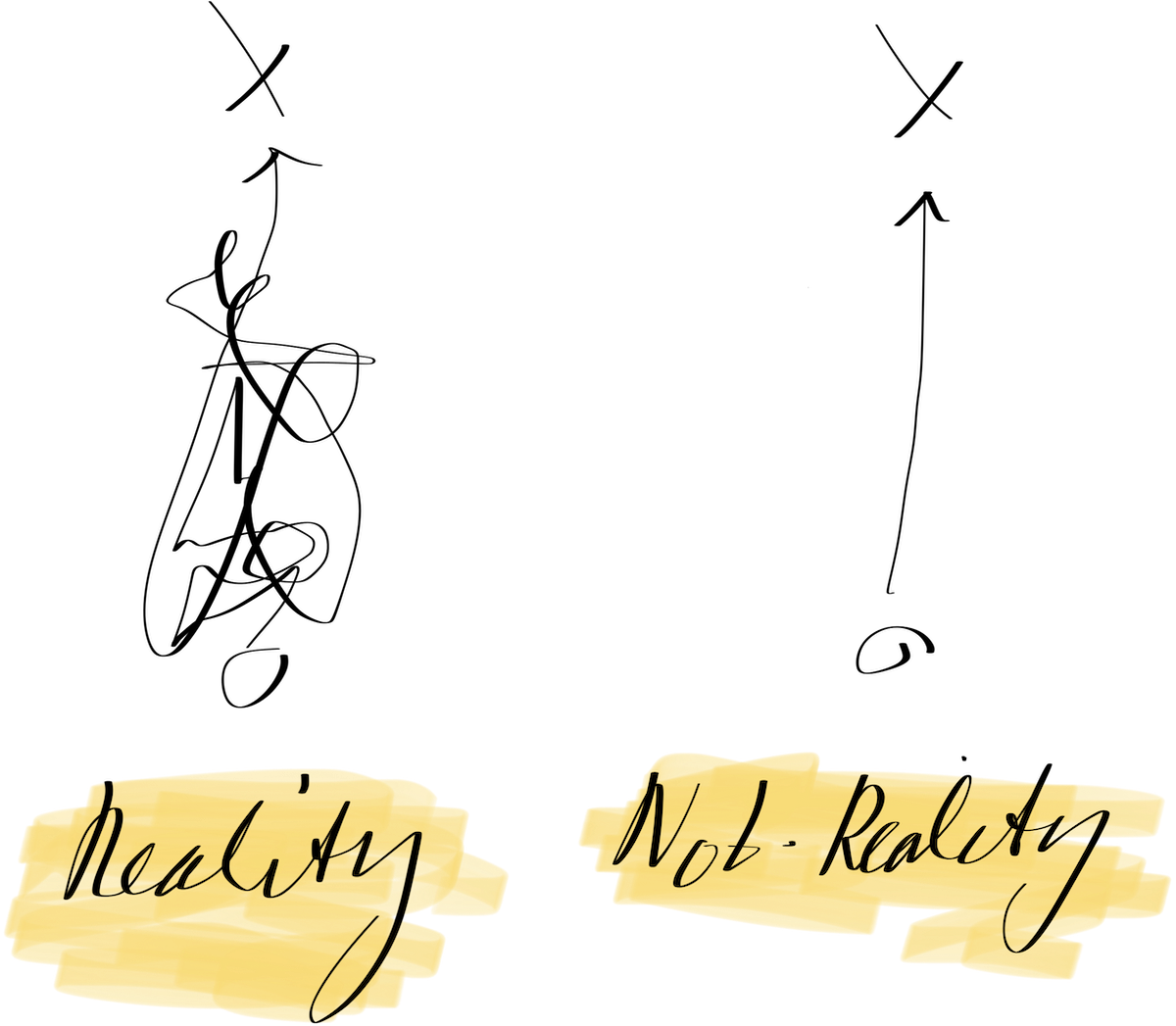Structure or Drown in Chaos
On Structure
Structure is the base of life. The world we exist in has a structure. You are walking on planet Earth, not dangling in nothingness. The very end of the world will be the absence of structure, the point of maximum entropy, total disorder, no form. Like in the ancient myths where the world is created from chaos, by bringing order, the end is the world returning into chaos.
The idea of self-discovery can carry a sense of obscurity. It sometimes attracts people who are less prone to work with structures. On the other hand, other students of mine cling to strongly to provided structures, which can also hurt their development, because they stop responding intuitively to what is happening.
I myself am a very open but less orderly person. I come from the artistic side of things. That is why I know how much supportive structures help me, because I regularly disappear into Ginnungagap, the yawning void, without them. My own self-discovery and development are based strongly on implementing well-working structures. But if my life becomes too pre-structured and predetermined, it feels like I am being choked by the stiff hands of order, and then I need to rebel, which usually ends in me abandoning the structures altogether for a while, until I find balance again.
Everyone's character here is individual. You need to find out how you work with structures. But I have never discovered anyone who works without them. No matter how open, artistic, or technical you are, everyone works with structures.
Structure in Practice
A concrete example: I have been teaching the handstand for more than twelve years. What I consistently notice is this: when people focus too much on "playing" instead of structured training, they do not properly develop. Every time a student tells me, "I want to practice the handstand more playfully now," I know they will not progress until they return to structured training. The reason is simple: they don't yet know how to practice playfully while still keeping a structure inside their playfulness.
My teacher Martin Kilvady is a true master of this. He works in open form, improvising instead of following fixed sequences. But he always uses an internal structure. He monitors himself, makes sure he goes into situations that develop him, and creates feedback loops for growth. That is what most people lack when they claim to be "playful." They simply stop creating a training stimulus.
It is different with something like soccer, where competitiveness itself creates the stimulus. In handstand practice, however, playful training without direction is almost always too weak to drive development.
It doesn't matter how you frame your training, whether you call it playful or strict, the basics of developmental practice are always the same: you need a direction and you need feedback.
Imagine you want to get to the supermarket and you don't know the way. If you have no idea of direction, you might walk completely the wrong way. In that case, your first goal is to find the direction, or you could say you need to "scout the map". That in itself can be an interesting process. The same happens in self-development when you don't yet know where the path is. You are in a kind of nothingness, but even there, you usually want to create some structure to help you find out. Because without any structure, you might turn in circles in one place on the map, instead of really exploring the map.

If you already have a direction, the next question is whether you know the steps that bring you there. And usually, life is not like an overly simple city map with two or three turns only. It is a complex three-dimensional space, full of hurdles, obstacles, and pitfalls. Some solutions you already know, others you have to figure out along the way. There is always obscurity, just as there is always structure. If you are good with structure, it helps you navigate the obscure.

In a storm, you search for shelter. If you fall overboard into the sea, you cling to a log or you create a swimming rhythm to conserve energy. Structure is what allows you to navigate, survive, and progress.
Coming back to the handstand: when students say they are practicing playfully, it often means they stop caring about feedback, steps, and clear direction. They throw structure overboard. Then progress usually stops. Some might argue that the progress only becomes more obscure, more challenging to detect. But from what I have seen, with students who are not yet able to structure their play, it is not really practice anymore. (Note that I am not disregarding the worth of playfulness at all, but I trust your intelligence as a reader to understand that)
Too Much Structure

Sheeler - Classic Landscape
Now let's look at the other side. You can live a very, very structured life: always getting up at the same time, going to work, following routines. Imagine the epitome of structure, working in a factory, always doing the same movements, always producing the same output.
If the structure is fixed and not changing according to your development, then structure will kill all development. Structure has to be dynamic. It is not like a house you build once and leave. It is more like an organic entity that constantly shape-shifts in accordance with your growth.
It should be clear that if I say, "I'm training every day: 100 push-ups, 100 sit-ups, 100 pull-ups, and that's my structure for years," then that is a completely idiotic way to train. That is not a practice. That is just repetition.
A practice means you adjust things all the time to ensure continuous development. Some people might argue that the development is in the quality of the execution, or in the consistency itself. But the reality is that many people who train like this lack an understanding of how development works. Their character clings to fixed structures. They are either uninterested or afraid of development.
This is the opposite of the artistic archetype, who gets bored when asked to repeat the same training again and again. The people who cling to fixed structures feel comfortable with them and will not change them on their own.
So even though structure sounds like something sturdy, it actually needs to be organic. Otherwise, it stops supporting you and starts decaying. Every living organism is constantly adjusting itself to the environment. This is how it survives for years and years.
Of course, you can also have very robust structures that aim for maximum durability and stiffness, without reacting to the environment. But then you are more like a stone. And stones, as far as I can tell, do not really develop themselves. They are mostly stepped on or thrown into rivers to drown there.
Creating Structures in Practice
_-_An_Italian_Landscape_in_the_Region_of_Tivoli_with_Classical_Figures_-_A.1936_-_Cannon_Hall.jpg)
Isaac de Moucheron - An Italian Landscape in the Region of Tivoli with Classical Figures
The creation of structures is always based on the knowledge we have gained through experience. When you create a structure for yourself, it is always experimental, and you will need to adjust it to make or keep it effective.
To build such a structure, it is imperative that you start to know yourself. In a sense, discovering yourself makes it easier if you have already discovered yourself a little bit. My function as a coach is supportive in this. You could say I am a structure creator, or that I help people create structures. I want to make sure I provide enough clear structure to the practitioner, but at the same time, invite them to restructure or change the practice according to what they need.
As said before, feedback is crucial. If you want to walk your path, you need feedback on several levels. The most basic layer is the feedback you give yourself. Here again we come back to perception, the foundation of my teaching framework: Perception, Expression, Relaxation (P.E.R). You need to take moments to perceive the effect of things so you can adjust the structure for your development. This has to be done every day, all the time.
Outside support is equally important. Today, it can be technical, like using a video camera if it is something visual, but the feedback of another living being is the basic form of outside feedback.
The critical skill to develop is to figure out from whom to take feedback, and what to do with it. I myself filter quite strongly how I integrate the input of people around me. One of the worst things you can do is take feedback from everyone, as that becomes highly confusing. You need to see whom you can trust with which kind of feedback, and how to integrate it. For that, it is essential to actually know the person as well: how they mean things and where they are coming from. In that sense, random feedback from someone you don't know on the internet is worthless. The input of a coach with whom you have built a trusting relationship can be worth far more than anything the internet could ever produce.
So the question with structures is always: what is the right amount of structure, and what is the right amount of feedback for me to thrive? The answer depends on character, environment, and situation. It depends on context.
Conclusion
The straightforward truth is: self-discovery is based on structures, because structures are the very base of this world and of our existence. You are a structure, and you are walking on a structure.
If you stop creating structures for yourself or ask for structures that are fitted to you and your situation, then structures will simply be forced upon you by society, by the environment, by everything around you.
So the real question is not: are you living with structures or not?
The real question is: have you taken action to shape your supporting structures in a way that allows you to develop and discover yourself?
Or have you passively decided to let structures enslave you, to make you just another cogwheel in the big factory?
It is your choice.
Joseph Bartz
2025-08-24